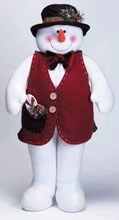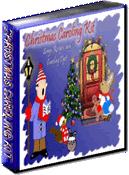|
Origins
of Halloween:
The
Celtic people, who lived more than 2000 years ago feared the evening
of Oct. 31 more than any other day of the year. It was the eve of
their festival of Samhain. Samhain was a joyful harvest festival
that marked the death of the old year and the beginning of a new
one. The day itself was a time for paying homage to the sun god
Baal who had provided the people with the ripened grain for use
in the upcoming winter. Come evening evil spirits were everywhere.
Charms and spells were said to have more power on the eve of Samhain.
Several rituals were performed by the Celtic priests, Druids, to
appease the Lord of the Dead.
Christianity was born, and grew strong until in the fourth century
after Christ, the Roman Empire Constantine declared it lawful. Within
the Roman Empire, the Christian Fathers tried their hardest to stamp
out all things pagan, which is what they named the older religions.
However, the Celts held firmly to their Druid customs. So, the Christian
church gave them new meanings and new names, and told the people
that the fire rites they had previously held for the Lord of the
Dead on Oct. 31 would now protect them from the Devil, the enemy
of God.
In the 7th century the church celebrated All Saint's Day in May,
but by the 9th century the date had been changed to Nov. 1st. The
original festival for the pagan Lord of the Dead became a festival
of Christian dead. People went on expecting the arrival of ghosts
on Oct. 31st. Another name for All Saint's Day was All Hallows'
Even which was later shortened to Halloween. In the 10th century
the church named Nov. 2nd as All Souls' Day in memory of all dead
souls. Halloween, All Saints' Day, and All Souls' Day come so close
together and are so similar that in some countries they tend to
merge together.
The witch is a central symbol of Halloween. The name comes from
the Saxon wica, meaning wise one. When setting out for a Sabbath,
witches rubbed a sacred ointment onto their skin. This gave them
a feeling of flying, and if they had been fasting they felt even
giddier. Some witches rode on horseback, but poor witches went on
foot and carried a broom or a pole to aid in vaulting over streams.
In England when new witches was initiated they were often blindfolded,
smeared with flying ointment and placed on a broomstick. The ointment
would confuse the mind, speed up the pulse and numb the feet. When
they
were told "You are flying over land and sea," the witch
took their word for it.
An Irish myth tells of a man named Stingy Jack, who one day invited
the Devil to have a drink. He convinced the Devil to change into
a sixpence in order to pay for the drink, but instead of paying
for the drink he pocketed the sixpence beside a silver cross which
prevented the Devil from changing back. Jack made a deal with the
Devil before letting him free. For one year the Devil could not
harrass Jack. Next Halloween the Devil met up with Jack again, and
Jack made another deal with him to be left alone. Jack died within
the year and was turned back from the Gates of Heaven. He went to
the Gates of Hell
and the Devil told him to go away, as Jack had made him promise
not to claim his soul. Jack didn't want to leave because it was
dark and he couldn't find his way. The Devil tossed Jack a glowing
coal and Jack put it inside a turnip, and ever since with this Jack-O'-Lantern,
Jack has been roaming the faces of this earth.
Scottish children hollow out and carve large turnips and put candles
in them. Irish children use turnips or potatoes. In parts of England
they use large beets. When the Scotch and the Irish came to the
US they found pumpkins, which of course make a perfect Jack-O'-Lantern.
The Halloween Masquerade
From earliest times people wore masks when droughts or other disasters
struck. They believed that the demons who had brought their misfortune
upon them would become frightened off by the hideous masks. Even
after the festival of Samhain had merged with Halloween, Europeans
felt uneasy at this time of the year. Food was stored in preparation
for the winter and the house was snug and warm. The cold, envious
ghosts were outside, and people who went out after dark often wore
masks to keep from being recognised. Until very recently children
would dress up as ghosts and goblins to scare the neighbours, but
there was no trick or treating. Around 40 years ago people began
to offer treats to their costumed visitors. In parts of England
the poor once went to houses singing and begging for soul cakes
or money. Spanish people put cakes and nuts on graves on Halloween,
to bribe the evil spirits.
|
|






